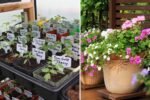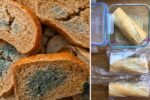Join on WhatsApp
Get the latest updates directly on WhatsApp – motivation, news & more!
In recent years, the importance of honeybees in our ecosystems has become more apparent than ever. These tiny pollinators play a crucial role in maintaining biodiversity and supporting food production worldwide. However, their populations have been under threat due to habitat loss, pesticides, and climate change. One of the best ways to help honeybees is to create a welcoming environment right in your own garden. By choosing the right plants and designing your garden thoughtfully, you can turn your outdoor space into a buzzing sanctuary that supports these vital creatures. Here’s how to make your garden a honeybee haven.
Understand the Needs of Honeybees
Before planting, it’s important to understand what honeybees require to thrive. Honeybees depend on a variety of nectar and pollen sources throughout the growing season. Diversity is key because different plants bloom at different times, ensuring a continuous supply of food. Bees also prefer flowers that provide easy access to nectar and pollen, usually those with open or shallow blooms.
Avoid plants treated with pesticides, especially neonicotinoids, as these chemicals are harmful to bees. Instead, look for organic or untreated plants and use natural gardening methods to protect your garden from pests.
Plant a Variety of Native Flowers
Native plants are naturally adapted to your local environment and are typically the best food sources for native pollinators, including honeybees. They tend to require less water and care once established, making them a sustainable choice. Consider mixing a variety of flowering plants that bloom at different times to provide nectar and pollen from early spring through late fall.
Some excellent native choices include coneflowers, bee balm, goldenrod, and wild bergamot. These plants attract bees with their bright colors and abundant nectar. Including a mix of wildflowers and garden favorites can help create a balanced and visually appealing garden while providing essential resources for honeybees.
Include Herbs and Vegetables that Attract Bees
Honeybees are not just drawn to traditional flowers; many herbs and vegetable plants also offer nectar and pollen that bees love. Planting herbs such as lavender, thyme, basil, and rosemary can boost bee activity in your garden. These plants are easy to grow and often release delightful fragrances that also benefit your cooking.
Vegetables like zucchini, cucumbers, and pumpkins produce flowers that bees find irresistible. Including these plants in your garden supports pollinators and also provides delicious, homegrown produce. Avoid using chemical sprays on these edible plants to keep them safe for bees.
Provide Shelter and Water Sources
In addition to food, honeybees need shelter and water to thrive. Leaving some areas of bare soil or undisturbed patches can provide nesting sites for solitary bees, which complement honeybee activity. Planting shrubs or trees can offer protection from harsh winds and extreme weather.
Water is equally important. Place shallow dishes filled with fresh water, adding small stones or twigs for bees to land on safely. Keep the water clean and refill regularly to prevent mosquito breeding.
Avoid Monocultures and Chemical Use
Large patches of a single plant species might look neat but don’t offer the variety bees need. Monocultures can lead to feast-or-famine situations for pollinators. Instead, aim for diverse plantings to keep bees nourished throughout the season.
Chemical pesticides and herbicides are a major threat to bee populations. Opt for organic gardening techniques like companion planting, crop rotation, and natural pest control methods. This will not only protect bees but also improve soil health and encourage beneficial insects.
Embrace Seasonal Blooming Cycles
Planning your garden so that flowers bloom in succession is essential. Early spring flowers like crocuses and dandelions provide the first nectar after winter, while late bloomers like goldenrod and asters support bees preparing for colder months.
Creating layers of flowering plants ground covers, mid-height plants, and taller blooms also increases the garden’s capacity to support bees by providing varied habitats and food sources.
Educate and Inspire Others
Creating a honeybee-friendly garden doesn’t just help the environment; it can inspire your community to follow suit. Share your knowledge and enthusiasm with neighbors, schools, and local gardening groups. Together, small individual efforts can lead to a significant positive impact on pollinator populations.
Consider adding informational signs in your garden or hosting workshops on pollinator-friendly gardening. The more people who understand the value of bees, the better their chances for survival.
Conclusion
Making your garden a honeybee haven is a fulfilling and impactful way to support these vital pollinators. By planting a diverse range of native flowers, herbs, and vegetables, providing shelter and water, avoiding chemicals, and embracing seasonal blooms, you create a thriving ecosystem for honeybees right at home. Not only will your garden become more beautiful and lively, but you will also be contributing to the health of the planet. Every bloom you nurture is a step toward a buzz-worthy future.




